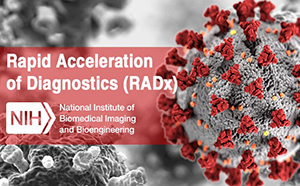Health technology headlines often sound futuristic: AI scribes capturing visits in real time or voice-activated assistants guiding patients through their care. These innovations are real and are being tested in hospitals and clinics today.
However, the reality in much of the healthcare sector is very different: paper forms, fax machines, and manual data entry are still part of everyday life.
This is not a contradiction. It’s the reality of healthcare: an industry shaped as much by policies, people, and patient trust as it is by technological possibilities. And it leads to a clear truth: the future of healthcare workflows will be hybrid.
The uneven pace of healthcare innovation
Healthcare is not embracing technology at the same time. Progress is layered, overlapping, and often uneven.
Some systems are testing ambient AI documentation that listens to clinical encounters and automatically generates notes. Meanwhile, many smaller or rural organizations are just beginning to digitize decades of paper records.
No one is in front or behind. Both reflect an organization’s readiness for change, and in healthcare, readiness is influenced by:
- Regulation and compliance. Each new workflow must meet strict privacy and data handling requirements.
- Resource limitations. Many organizations operate with limited IT budgets and staff, making large-scale changes difficult.
- Diversity of users. Healthcare workers and patients span a broad spectrum of digital literacy, from early adopters of technology to those who still prefer paper.
This environment ensures that familiar tools like forms and checklists continue to thrive, even as artificial intelligence and automation expand what’s possible.
Hybrid Workflows in Action
Consider the process of admitting patients to an urgent care center:
Step 1: Start intake
- A digitally savvy patient receives a secure SMS link prior to arrival. They interact with a conversational assistant who verifies identity, verifies insurance, and collects basic details.
- Another patient comes in and is handed a traditionally shaped tablet. Returning patients see key fields pre-populated from their records.
Step 2: Clinical information
- Through AI, patients describe symptoms conversationally and the system structures their responses for clinical use.
- On forms, patients select checkboxes and drop-down menus.
Step 3: Consent
- All patients receive the same disclosures. Some listen to a brief explanation and tap to accept, while others scroll through a familiar form before signing.
Step 4: Unified Results
Regardless of the method, data enters the electronic medical record in a standardized, physician-ready format. The nurse reviewing the record sees the same clear information, regardless of how it was collected.
In practice, this is a hybrid workflow: multiple inputs, unified results.
Why hybrid is essential in healthcare
Hybrid is not a stopgap: it is the sustainable way forward.
- Patients expect to have a choice. Some prefer text messaging or conversational AI; Others want the reassurance of structured forms or face-to-face interaction. A single method risks excluding people.
- Doctors need stability. Health care workers already balance heavy demands. Hybrid approaches allow for gradual adoption of new tools without disrupting familiar processes.
- Compliance requires structure. Regulatory frameworks require clear audit trails. Structured forms and workflows remain indispensable, even alongside advanced automation.
- Infrastructure varies. Large health systems can support cutting-edge integrations, while smaller practices still rely on older systems. Hybrid workflows provide flexibility across this spectrum.
Design of effective hybrid systems
Creating effective hybrid workflows requires intentional design. Success depends on:
- Flexible tickets. Patients and staff should be able to interact through forms, conversations or voice as needed.
- Consistent results. Regardless of how the information is collected, it must be incorporated into standardized and reliable clinical data.
- Accessibility. Workflows should be inclusive and address differences in language, ability, and digital comfort.
- Governance and compliance. Each workflow path must maintain the same high standards of security and auditability.
- Adaptability. Workflows should evolve over time, allowing organizations to increase automation as readiness grows.
When designed with these principles, hybrid workflows not only bridge new and old systems, but allow healthcare organizations to modernize responsibly.
Evidence of hybrid value
Real-world results show the benefits of hybrid approaches:
- Reduction of absences. Clinics that added SMS reminders alongside traditional phone calls significantly reduced missed appointments.
- Improved patient satisfaction. Health systems that offer both mobile pre-registration and in-person registration had higher patient experience scores.
- Efficiency gains. Digital intake options reduced cycle times for front-office staff, while forms ensured patients who were uncomfortable with technology still had a reliable path.
These results illustrate a critical point: hybrid workflows not only balance competing preferences, they improve overall performance.
The way forward
Healthcare is rarely transformed through total disruption. There is too much at stake and the picture is too complex. Instead, what succeeds are approaches that allow multiple ways of working to coexist while gradually moving the system forward.
That’s the role of hybrid workflows. They recognize where organizations are today, support diverse users, and constantly expand the reach of new technologies.
The future of healthcare workflows will neither be purely digital nor purely manual. It will be hybrid: flexible, inclusive, compliant and forward-thinking. And it is this hybrid future that will ultimately deliver on the promise of healthcare: providing safe, efficient, patient-centered care for all.
About Sarah Galyon
Sara Galon is senior director of healthcare solutions at Intelistack. He has 17 years of experience in the healthcare industry and previously worked for a large academic medical center and health system, where he spent over a decade specializing in process improvement and digital transformation in both clinical and administrative healthcare.



